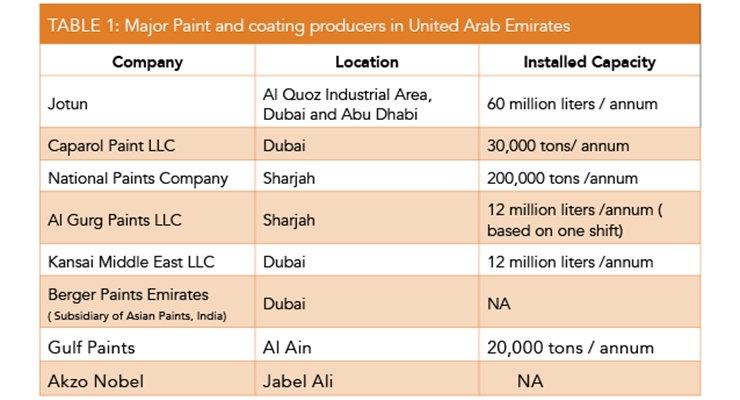5 Frequent Errors In Paint And Techniques To Avoid Them
5 Frequent Errors In Paint And Techniques To Avoid Them
Blog Article
Written By-Price Salomonsen
When painting, you might unknowingly make typical errors that could affect the final look of your project. From selecting recommended to making certain correct surface area preparation, each step plays a crucial duty in accomplishing a remarkable surface. By recognizing these challenges and finding out how to prevent them, you can raise your painting skills and create a room that genuinely reflects your style and interest to detail.
Incorrect Paint Shade Option
Picking the best paint shade is crucial when it pertains to achieving the preferred search for your space. It sets the mood, boosts the atmosphere, and links the room together. The wrong color selection can bring about a space that really feels unbalanced or encounter the rest of your decoration.
Prior to picking a color, consider the natural illumination in the room, the function of the space, and the existing shades of your furniture and devices.
To avoid the mistake of picking the wrong paint color, beginning by checking out samples on your walls. Paint can look different in various lighting conditions, so it's important to see exactly how the shade appears throughout different times of the day. Additionally, do not neglect to take into consideration the undertones of the paint shade.
Warm undertones can produce a comfy ambience, while amazing undertones can make a space feel even more roomy and ventilated.
Inadequate Surface Prep Work
Poor surface area prep work before painting can dramatically influence the outcome of your project. Missing or hurrying with this important step can cause various problems such as poor paint attachment, unequal structure, and premature peeling or splitting. To ensure an effective paint work, make the effort to properly prepare the surface area prior to diving into the fun part of applying the paint.
Beginning by extensively cleansing the surface to remove any type of dust, dirt, oil, or mold. Sanding the surface area smooth can help create a much better bond for the paint to follow. Fill up https://docs.google.com/spreadsheets/d/1bmtbx87AkhrK1utW9uOSzRIRJHo5nu-UMGGP6P4x-eY/edit?usp=drive_link of openings or splits with spackling compound and sand them down as soon as dry.
It's also important to prime the surface prior to painting to ensure better protection and resilience.
Ignoring proper surface area preparation can result in a subpar finish that might need expensive touch-ups or even a complete remodel. By spending time and effort into preparing the surface correctly, you can accomplish professional-looking outcomes that will stand the test of time.
Poor Paint High Quality Selection
Before embarking on your painting task, it's crucial to pay attention to the top quality of the paint you select. Poor repaint quality can cause a range of problems, consisting of unequal coverage, color disparities, and premature wear and tear. When choosing paint, opt for respectable brand names known for their durability and color consistency. Less costly paints may look like an affordable choice originally, however they commonly do not have the necessary pigments and binders for lasting outcomes.
Low-quality paints can additionally result in inadequate adhesion to surfaces, leading to peeling off or cracking soon after application. Furthermore, these paints might call for even more coats to achieve proper insurance coverage, inevitably costing you more money and time.
To stay clear of these pitfalls, invest in high-grade paints especially developed for the surface you're repainting, whether it's walls, trim, or furniture. By picking costs paint products, you can ensure a smooth application procedure and a professional-looking coating that will stand the test of time.
Irregular Paint Application
To attain a professional-looking finish on your paint task, making sure an also paint application is crucial. Unequal paint application can lead to noticeable brush strokes, streaks, and an overall unprofessional look. To avoid this error, ensure to correctly prepare the surface area before paint. Fill out any holes or fractures, sand harsh areas, and tidy the surface area extensively.
When using the paint, use smooth and regular strokes to create a consistent insurance coverage. Prevent straining the brush or roller with paint, as this can result in drips and uneven spots. Furthermore, operate in small areas and blend each brand-new area with the previous one to keep a smooth finish.
If utilizing a roller, make sure to uniformly distribute the paint using a "W" or "M" pattern before rolling in a single instructions for a smooth result. Taking https://www.azcentral.com/story/sponsor-story/arizona-painting-company/2019/01/01/10-things-watch-during-painting-projects-final-walkthrough/2433201002/ to guarantee an even repaint application will dramatically boost the overall appearance of your painting job.
Neglecting Proper Cleaning
Stopping working to properly tidy up after finishing a painting job can bring about a range of problems that could have been quickly avoided. Ignoring proper clean-up can cause dried paint on brushes, rollers, and trays, making them challenging or impossible to reuse. Leaving paint cans open or improperly sealed can result in premature drying of the paint within, losing your resources. In addition, unclean spills or splatters promptly can cause spots on floorings, furnishings, or various other surfaces that might be challenging to remove later on.
To avoid these troubles, make certain to cleanse your paint devices completely after each usage. Use suitable cleaner for the type of paint you utilized and comply with the supplier's guidelines. Seal paint canisters firmly to prevent drying out and save them in a great, dry location. Address spills promptly with a wet towel or sponge to avoid them from establishing.
Appropriate cleanup not just keeps the high quality of your tools and materials but additionally ensures a clean and organized office for your next painting task.
Verdict
Finally, by staying clear of usual painting mistakes such as picking the incorrect paint color, inadequate surface area prep work, poor paint high quality selection, uneven paint application, and disregarding proper cleanup, you can achieve an expert surface in your room. Bear in mind to carefully consider all aspects of the paint process to ensure a successful outcome. Delighted paint!
